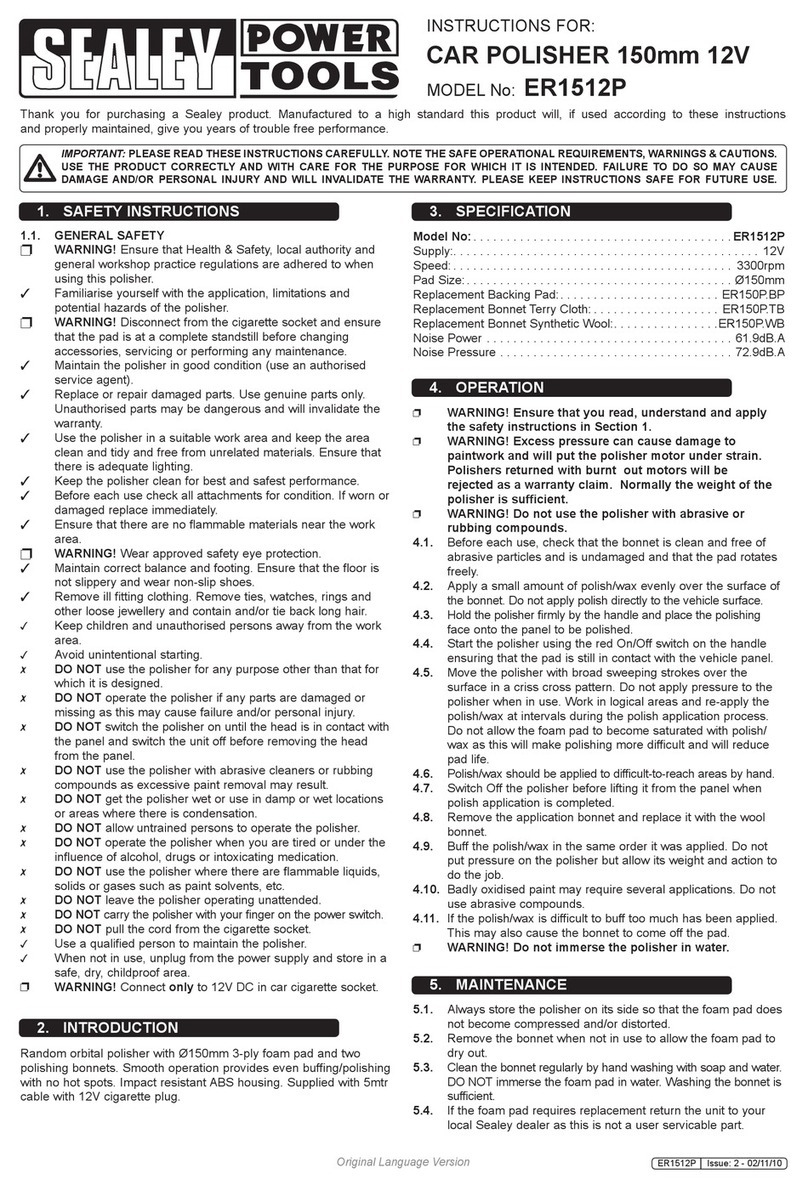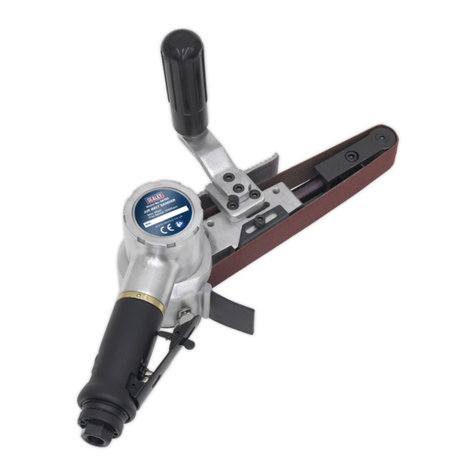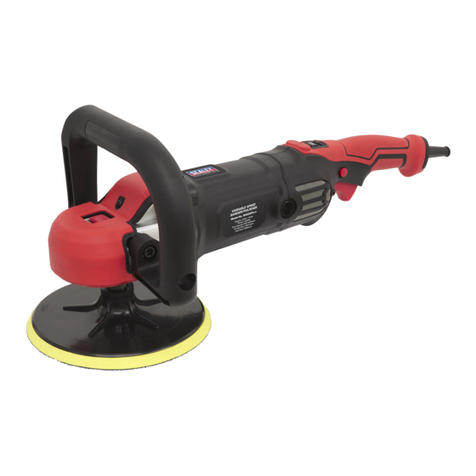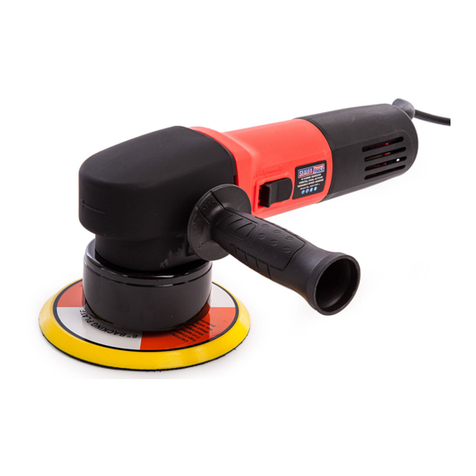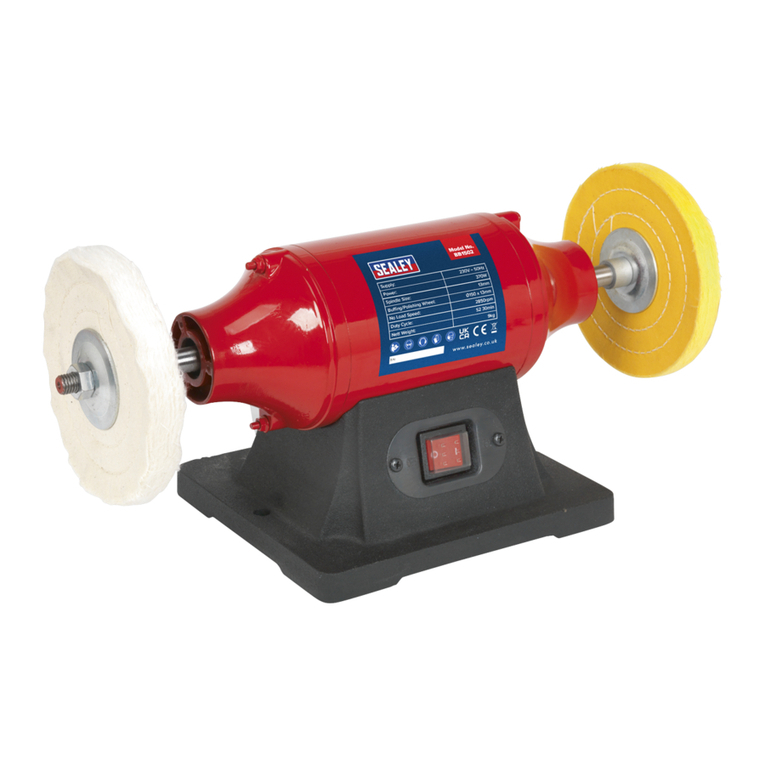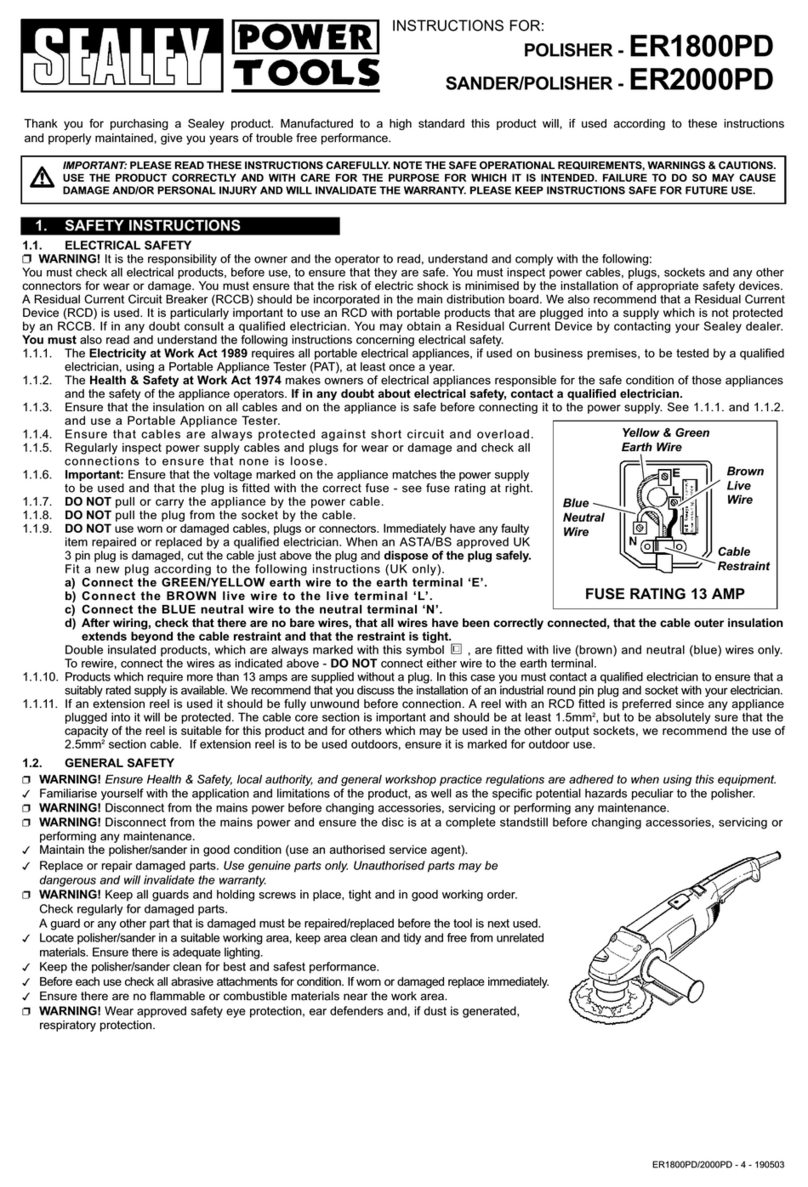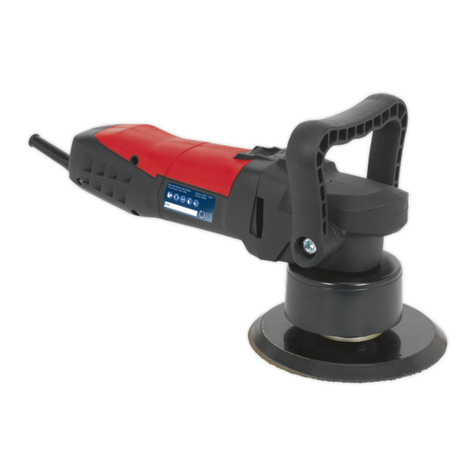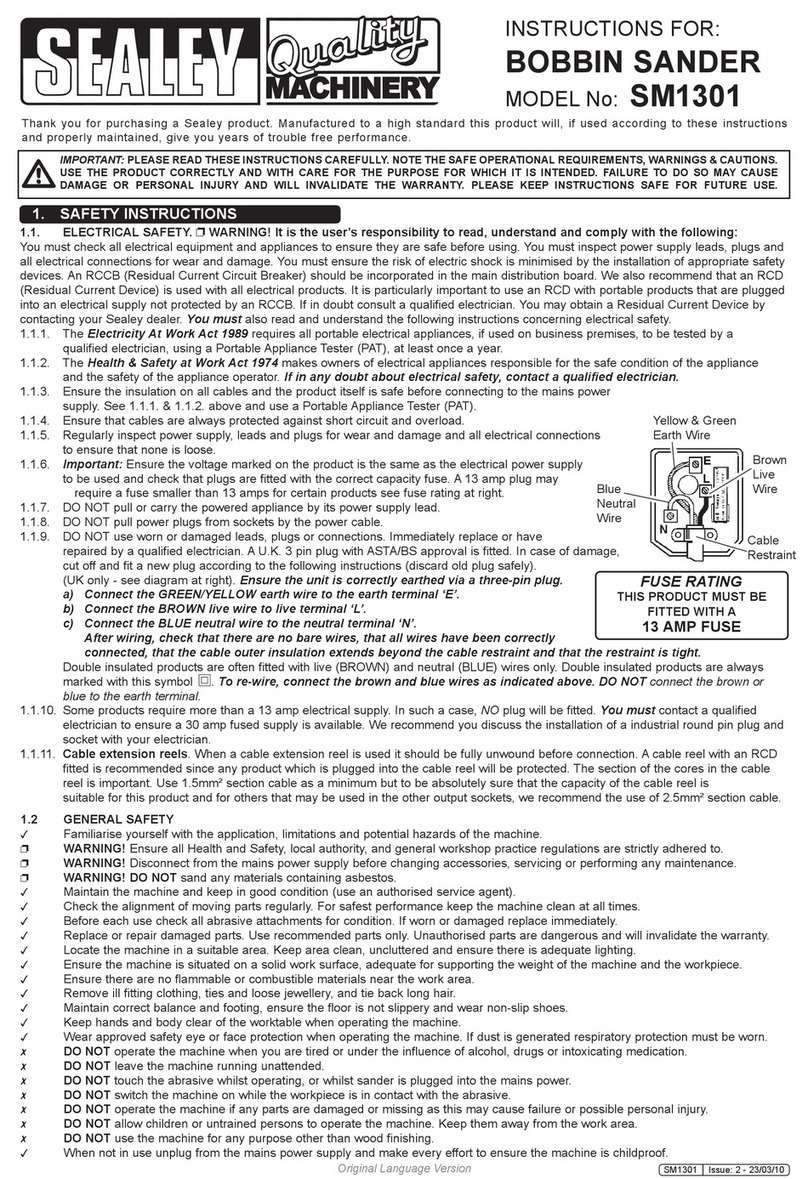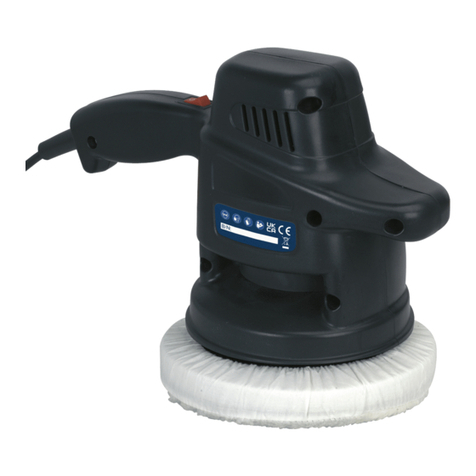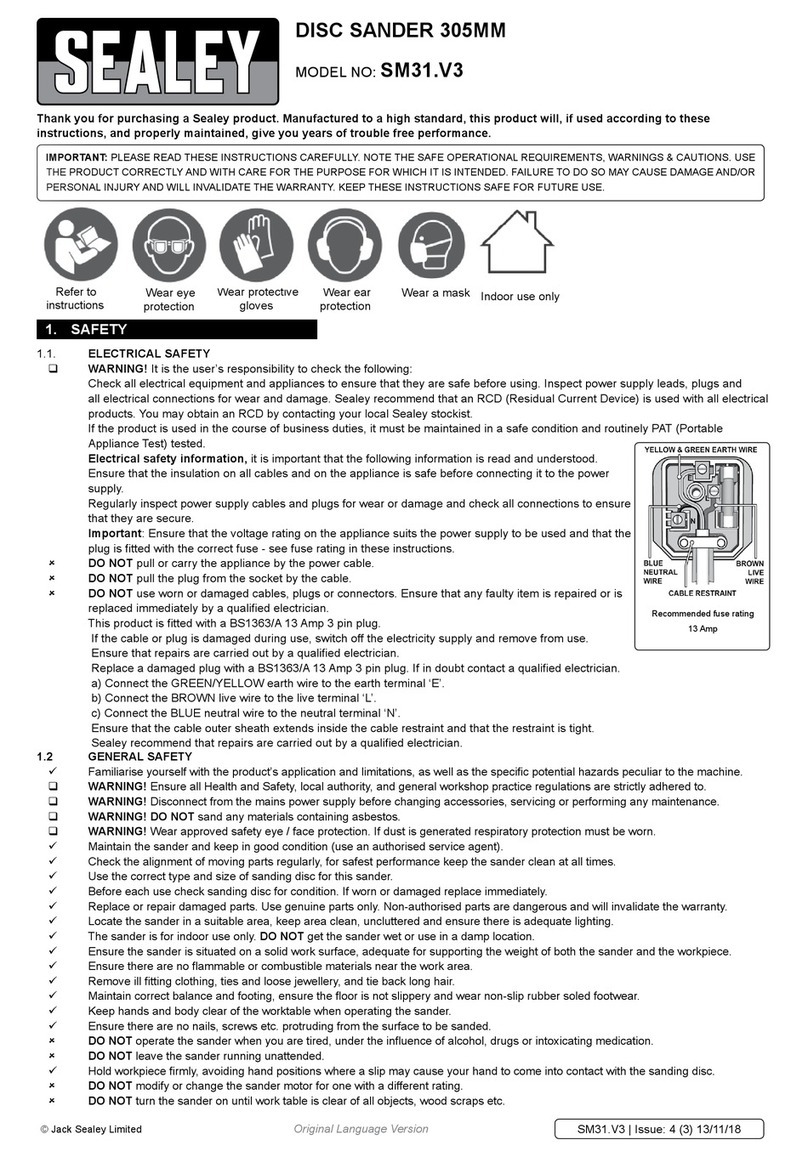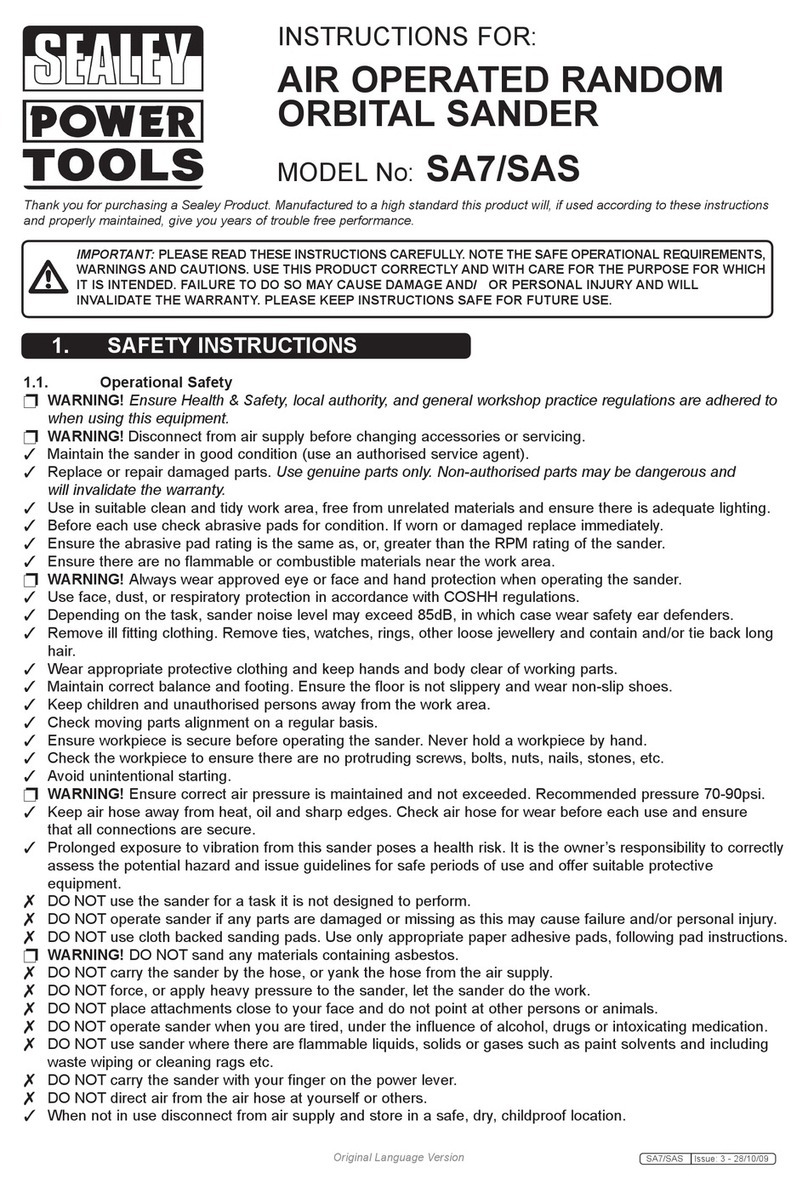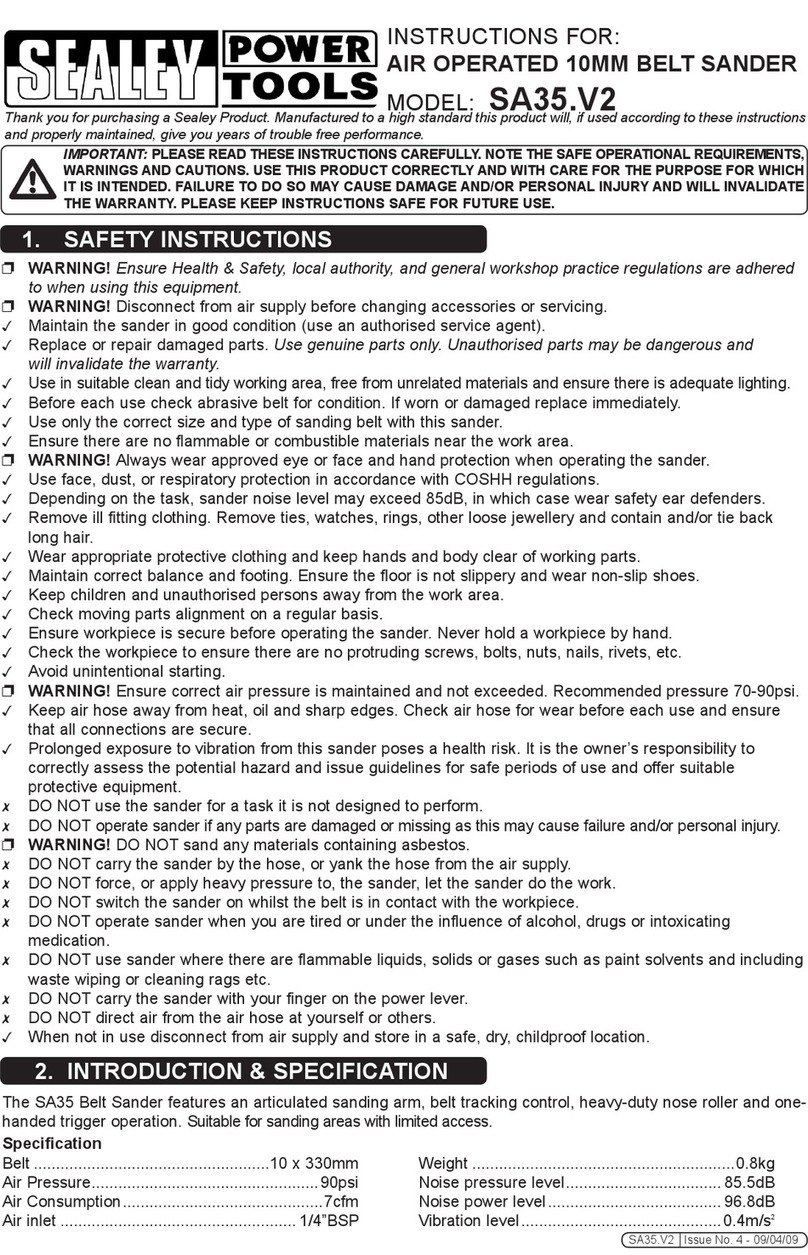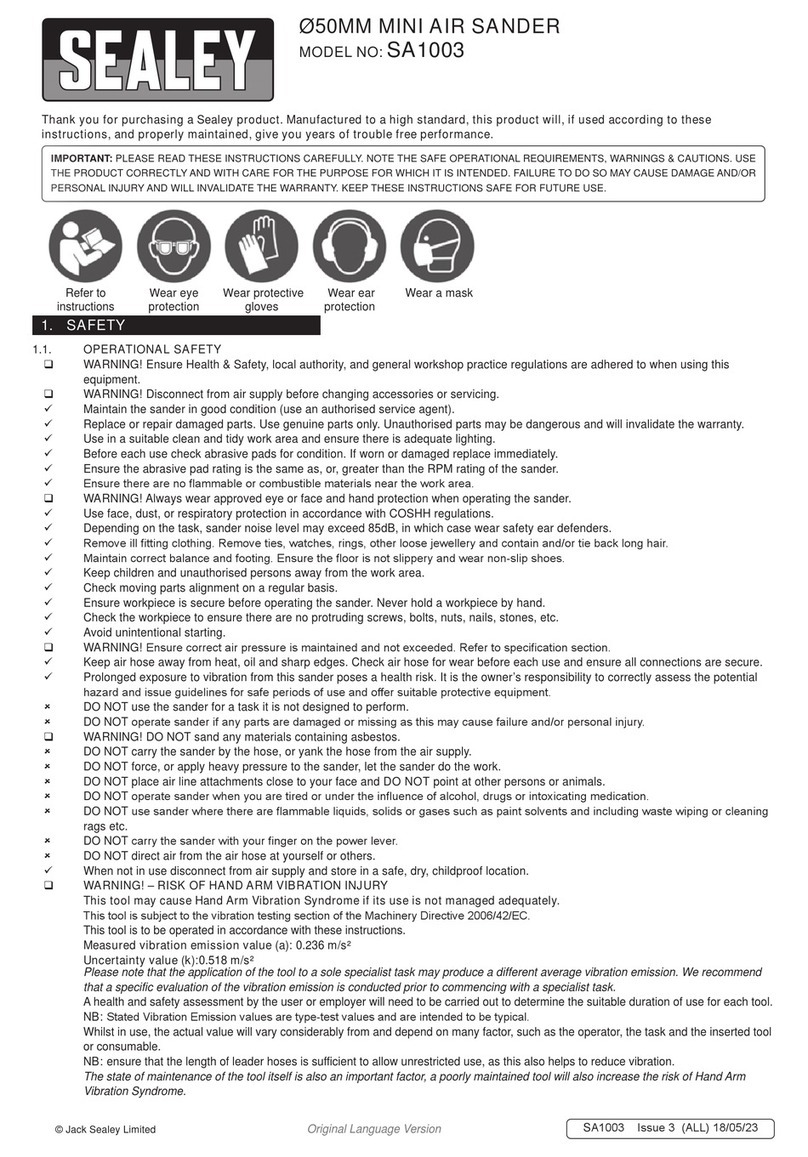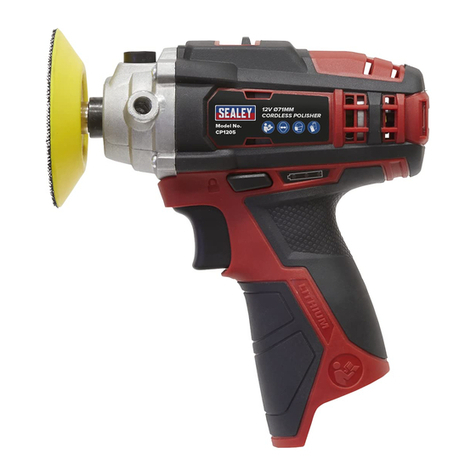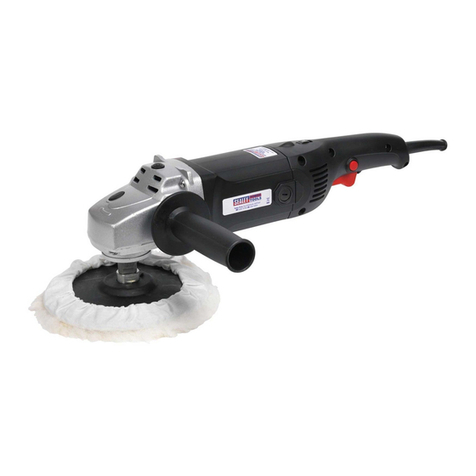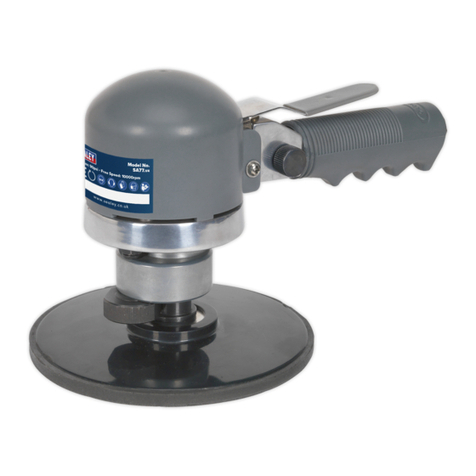
Thank you for purchasing a Sealey Product. Manufactured to a high standard this product will, if used according to these instructions and properly maintained, give you years of trouble free
performance.
IMPORTANT: PLEASE READ THESE INSTRUCTIONS CAREFULLY. NOTE THE SAFE OPERATIONAL REQUIREMENTS, WARNINGS AND CAUTIONS. USE THIS PRODUCT
CORRECTLY AND WITH CARE FOR THE PURPOSE FOR WHICH IT IS INTENDED. FAILURE TO DO SO MAY CAUSE DAMAGE AND/OR PERSONAL INJURY AND WILL
INVALIDATE THE WARRANTY. PLEASE KEEP INSTRUCTIONS SAFE FOR FUTURE USE.
p WARNING! Ensure Health & Safety, local authority, and general workshop practice regulations are adhered to when using this equipment.
pWARNING! Disconnect from air supply before changing accessories or servicing.
pWARNING! Always wear approved eye or face and hand protection when operating the sander.
pWARNING! Ensure correct air pressure is maintained and not exceeded. Recommended pressure 70-90psi
pWARNING! DO NOT sand any materials containing asbestos.
7DO NOT use the sander for a task it is not designed to perform.
7 DO NOT operate sander if any parts are damaged or missing as this may cause failure and/or personal injury.
7DO NOT use cloth backed sanding pads. Use only appropriate paper adhesive pads, following pad instructions.
7DO NOT carry the sander by the hose, or yank the hose from the air supply.
7DO NOT force, or apply heavy pressure to the sander, let the sander do the work.
7DO NOT place air line attachments close to your face and do not point the air line at other persons or animals.
7DO NOT operate sander when you are tired, under the influence of alcohol, drugs or intoxicating medication.
7DO NOT use sander where there are flammable liquids, solids or gases, such as paint solvents and including waste wiping or cleaning rags etc.
7DO NOT carry the sander with your finger on the power lever.
7DO NOT direct air from the air hose at yourself or others.
3Maintain the sander in good condition (use an authorised service agent).
3Replace or repair damaged parts. Use genuine parts only. Unauthorised parts may be dangerous and will invalidate the warranty.
3Use in a suitable, clean and tidy work area, free from unrelated materials. Ensure there is adequate lighting.
3Before each use check abrasive pads for condition. If worn or damaged replace immediately.
3Ensure the abrasive pad RPM rating is the same as, or greater than, the RPM rating of the sander.
3Ensure there are no flammable or combustible materials near the work area.
3Use face, dust, or respiratory protection in accordance with COSHH regulations.
3Depending on the task, sander noise level may exceed 85dB in which case wear safety ear defenders.
3Remove ill fitting clothing. Remove ties, watches, rings, other loose jewellery and contain and/or tie back long hair.
3Wear appropriate protective clothing and keep hands and body clear of working parts.
3Maintain correct balance and footing. Ensure the floor is not slippery and wear non-slip shoes.
3Keep children and unauthorised persons away from the working area.
3Check moving parts alignment on a regular basis.
3Ensure workpiece is secure before operating the sander. Never hold a workpiece by hand.
3Avoid unintentional starting.
3Keep air hose away from heat, oil and sharp edges. Check air hose for wear before each use and ensure that all connections are secure.
3Prolonged exposure to vibration from this sander poses a health risk. It is the owner’s responsibility to correctly assess the potential hazard and issue guidelines for
safe periods of use and offer suitable protective equipment.
3When not in use disconnect from air supply and store in a safe, dry, childproof location.
INSTRUCTIONS FOR:
AIR RANDOM ORBITAL SANDER
MODEL No: SA7/TAS
LEAD PAINT WARNING!
Paint once contained lead as a traditional ingredient. Contact with the dust from the removal of such paint is toxic and must therefore be avoided. The following
action must be taken before using the sander on a surface that you suspect may contain lead paint.
1. User must determine potential hazard relating to age of paint to be removed (modern paints do not have lead content).
2. DANGER! Keep all persons and pets away from the working area. The following are particularly vulnerable to the effects of lead paint dust: Expectant
women, babies and children.
3. We recommend personal protection by using the following safety items:
a) Paint Spray Respirator (Our ref SSP16EN)
b) PE Coated Hooded Coverall (Our ref SSP266).
c) Latex Gloves (Our ref SSP24).
4. Take adequate measures to contain the paint dust, flakes and scrapings.
5. Continue to wear safety equipment as in (3) above and thoroughly clean all areas when task is complete. Ensure paint waste is disposed of in sealed bags
or containers.
2. INTRODUCTION & SPECIFICATION
Fitted with patented air diversion system which maximises level of dust collection. High quality DA sander with internally chromed cylinder and precision bearings for
super-smooth operation. Fitted with air flow control valve and housing insulation to prevent hand chill.
Pad Size .......................150mm Air Inlet .......................1/4”BSP Weight............................2kg
Thread Size ..................5/16”UNF Air Consumption .................. 4cfm Sound Pressure ...............85.1bB(A)
Free Speed . . . . . . . . . . . . . . . . . . 10000rpm Operating Pressure ...............90psi Vibration .......................5.0m/s²
3. PREPARING SANDER FOR USE
3.1. Air Supply
3.1.1. Ensure the sander air valve (or throttle) is in the "off" position before connecting to the air supply.
3.1.2. You will require an air pressure between 70-90psi, and an air flow according to the specification above.
3.1.3. pWARNING! Ensure the air supply is clean and does not exceed 90psi while operating the sander.
Too high an air pressure and unclean air will shorten the product life due to excessive wear, and may be dangerous, causing damage and/or personal injury.
3.1.4. Drain the air tank daily. Water in the air line will damage the sander and will invalidate your warranty.
3.1.5. Clean air inlet filter weekly. Recommended hook-up is shown in fig. 1.
3.1.6. Line pressure should be increased to compensate for unusually long air hoses (over 8 metres).
The minimum hose diameter should be 1/4” I.D. and fittings must have the same bore dimension.
3.1.7. Keep hose away from heat, oil and sharp edges. Check hoses for wear, and make certain that all connections are secure.
3.2. Couplings
Vibration may cause failure if a quick change coupling is connected directly to the air sander. To overcome this, connect a leader hose to the sander. A quick
change coupling may then be used to connect the leader hose to the air line recoil hose. See figs. 1 & 2.
1. SAFETY INSTRUCTIONS
Original Language Version SA7/TAS Issue: 2 - 05/11/09
